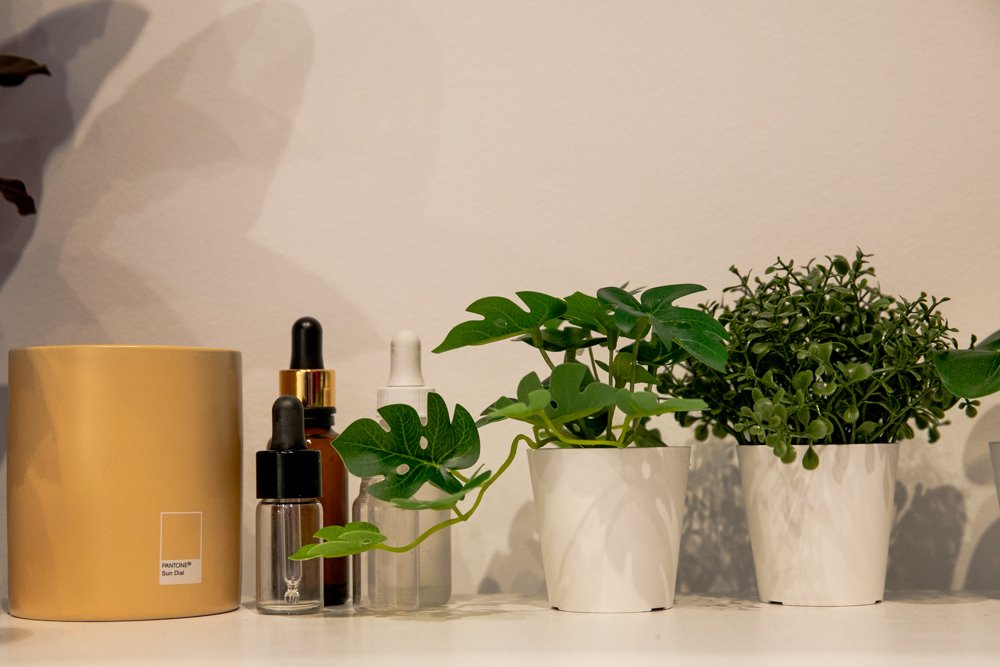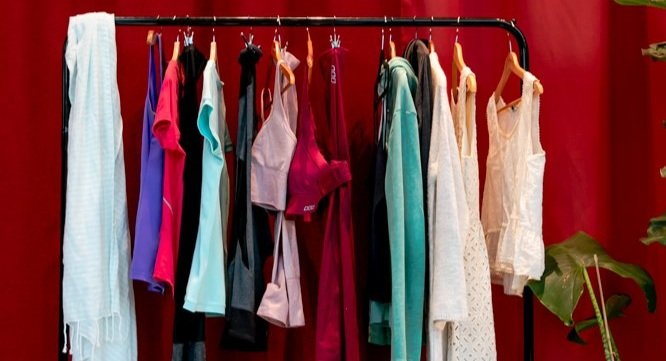When Beauty Becomes the Beast: Meet the Artists Behind Selfcare_4eva_2001
Conversations on wellness have ricocheted around the internet and become firmly entrenched in the public imagination. From 13-step Korean skincare regimens to shunning gluten, wellness is about much more than the absence of sickness—it's a trillion-dollar industry. But when ‘me time’ equals thousands of hours alone modifying your body for the public gaze, should we examine these self-care practices more closely? What does it say of self-care that most regimens are marketed to women, can be painful, and often come with social expectations of continued upkeep?
Exhibiting as part of MENTAL: Head Inside, Caithlin O’Loghlen will adopt the username @selfcare_4eva_2001. With behind-the-scenes support from Mary Angley, Caithlin will investigate modern wellness culture firsthand by attempting to become the world’s most famous wellness influencer.
***
SGM: Was there an a-ha moment for either of you when you realised the commercialised wellness industry isn’t really concerned with our wellbeing?
Caithlin: There's one quote that we keep coming back to: ‘Wellness is health that can be sold to you’. We've been marketed these products (like essential oils) that eventually run out and need to be re-bought. Embedded in these rituals is the repeated practice of re-buying. Eventually, the essential oils probably do help you to sleep and by then, you’ve become psychologically dependent on them. Plus, these things are expensive.
SGM: Not to mention that the words surrounding these products— self-care, nourishment, clean eating are all affiliated with being a good person. Meanwhile, you are implicitly shamed for not doing them as bad and neglectful. ‘I’m too lazy to shave’. ‘I’m having a cheat day.’ There’s a sense of morality attached to self-care routines that positively reinforces them.
Mary: Yeah, and sometimes when I’m engaging in these routines, it’s all about making me feel recharged enough to go back to work. My relaxation has become really centred in productivity. The penny really dropped when Goop came out and I was like, ‘this is wild!’ Goop has forever been a major reference point for us. The jade egg has really become synonymous with like the craziest lengths of the wellness industry.
SGM: I was wondering how many minutes into this conversation someone would bring up the jade egg.
The jade egg is inserted into the vagina for ‘spiritual detox’. Founded by Hollywood actress Gwenyth Paltrow, Goop is a lifestyle brand synonymous with trying expensive and unproven wellness remedies in the name of self-care.
SGM: I found this Tweet that reads ‘Capitalism takes community away from you and tries to convince you that, because as an individual, you can’t complete communal tasks, there is something wrong with you. No amount of self-care can replace our need for community care’. In a post-colonial context, it feels like we’re expected to self-care our way through life instead of being supported by our communities. I noticed that a lot of the self-care practices in your exhibit are rooted in self-sufficiency.
Caithlin: I think it’s really important to study the root causes of stress and to examine the market forces that are acting on us when we start resorting to these individualistic solutions to our stress problems. I guess I want to add that at some point, there is major burnout from self-care. You’re doing seven workouts a week and facemasks and making acai bowls. Or, if you’re really on the bizarre side of wellness, maybe you’re doing a five day water fast and about to pass away. It reaches a point where it’s completely unsustainable to be continuing and there does need to be a general awareness to step back and critically think about the role that self-care is actually having on our wellbeing.
SGM: It seems like contemporary wellness can be more about APPEARING well rather than actually BEING well. Because what you’re describing sounds quite harmful and not particularly healthy. And yet, some of those things may give a person the aesthetic of being really well. Your installation also contains a rack of activewear and mirrors, implying that our external appearances are important in the context of these discussions. Can you speak to the intersection of appearance and wellness?
Caithlin: If wellness was genuinely about feeling good in yourself (independently) without needing a spectator’s validation, then lululemon would be out of business. You can work out comfortably in a pair of loose cotton shorts and a tee shirt you already own. But we want to wear different activewear outfits and we want compression pants to make our butts look nicer. The rise of athleisure is a signifier that we are about to work out or have already worked out and it’s internalised by anyone who sees us that we are religiously committed to our bodies.
SGM: Interestingly, I think this is a cultural thing because in France, people are generally quite secretive about working out. It’s not openly displayed, and people get changed before and after working out. It’s not as transparent in that regard.
Mary: Yeah that’s interesting.
SGM: Something I think we’ve danced around is that so much of self-care is driven by self-hatred. Many people are fueled to work out because they dislike their body. I wonder how many people would work out if they were gifted with their ideal body that never changed.
And our experiment kind of interrupts this. It’s like, OK, film yourself for a week and show us everything you’re doing as self-care and I think that’s a way of breaking down the performative element. I like the durational aspect of our project for that reason. You can’t perform six hours a day for two weeks. It has to become real eventually.
SGM: Your installation also contains items such as crystals that reflect alternative self-care remedies becoming more mainstream. Why do you think things like spirituality and astrology are having such a huge cultural impact right now?
Mary: I was explaining this project to my mum and talking about all the things that are missing from our neo-liberal-rugged-individualism-kinda society. Mum pointed out that a lot of the communal care practices I was describing were once provided by the church. But in our increasingly secular society, where our lives are more devoted to work and labour, there is still this desire to believe in something bigger than the self that is not being met. And if you’re going to be connected with something, why shouldn’t it be a pretty rock made by the earth? I think crystals and astrology cater to the idea that we are existentially significant within a vast universe that makes you feel small.
Caithlin: And then astrology puts you into these 12 very separate boxes that act as a kind of community. Like I’m a Scorpio....
SGM: I’m Scorpio too!
Mary: I was just going to say that I love putting people into 12 boxes but that’s cause I’m a Virgo!
SGM: In terms of your upcoming residency, what can visitors expect to see from you at Science Gallery Melbourne?
Caithlin: Well, it’s an ever-changing installation. I can’t quite tell you yet because I haven’t started, so I don’t know what the vibe is going to be. I do know that we are going to be meeting with a host of other creatives and creating some silly, tongue-in-cheek content examining the wellness industry. We’re making and destroying mood boards... I want to be engaging with people through the entire process. I’m excited to have people come through our exhibit and to be able to turn performative self-care into a space of conversation and community. Hopefully, the community we create can continue through our Instagram account once the residency is finished, and visitors can see the mess and chaos that was left behind.
SGM: Selfcare_4eva_2001 is obviously a social commentary on the contemporary wellness industry. That being said, are there any popular self-care remedies that you find yourself using?
Caithlin: Well, when I can feel myself not being productive enough, I can make myself do a ‘Yoga with Adrienne’ video.
SGM: She really is the backbone of free healthcare.
Caithlin: Sometimes I’ll light a candle or do a facemask and I feel like it changes my personality and outlook, but I know it’s kind of a delusion...
SGM: If the placebo effect works then I guess it doesn’t matter. It achieves the same goal as a real remedy. It’s interesting too because a lot of the things you’ve mentioned seem to engage and bring pleasure to our five senses. It’s really grounding.
Caithlin: I would love to say that I never get sucked in but I do. I’m so sucked in. It’s nice to critique it but there’s always going to be a part of me that’s like, fix me, fix me.
SGM: I think it’s OK to critique self-care as an industry while still enjoying its spoils. Wellness runs deeper than a hot bath and a face mask, but sometimes that’s what you really need.
Selfcare_4eva_2001 is on display from January 20 as part of our latest exhibition, MENTAL: Head Inside. Interact with the exhibit live between February 1-12 (Tuesdays to Saturdays).






